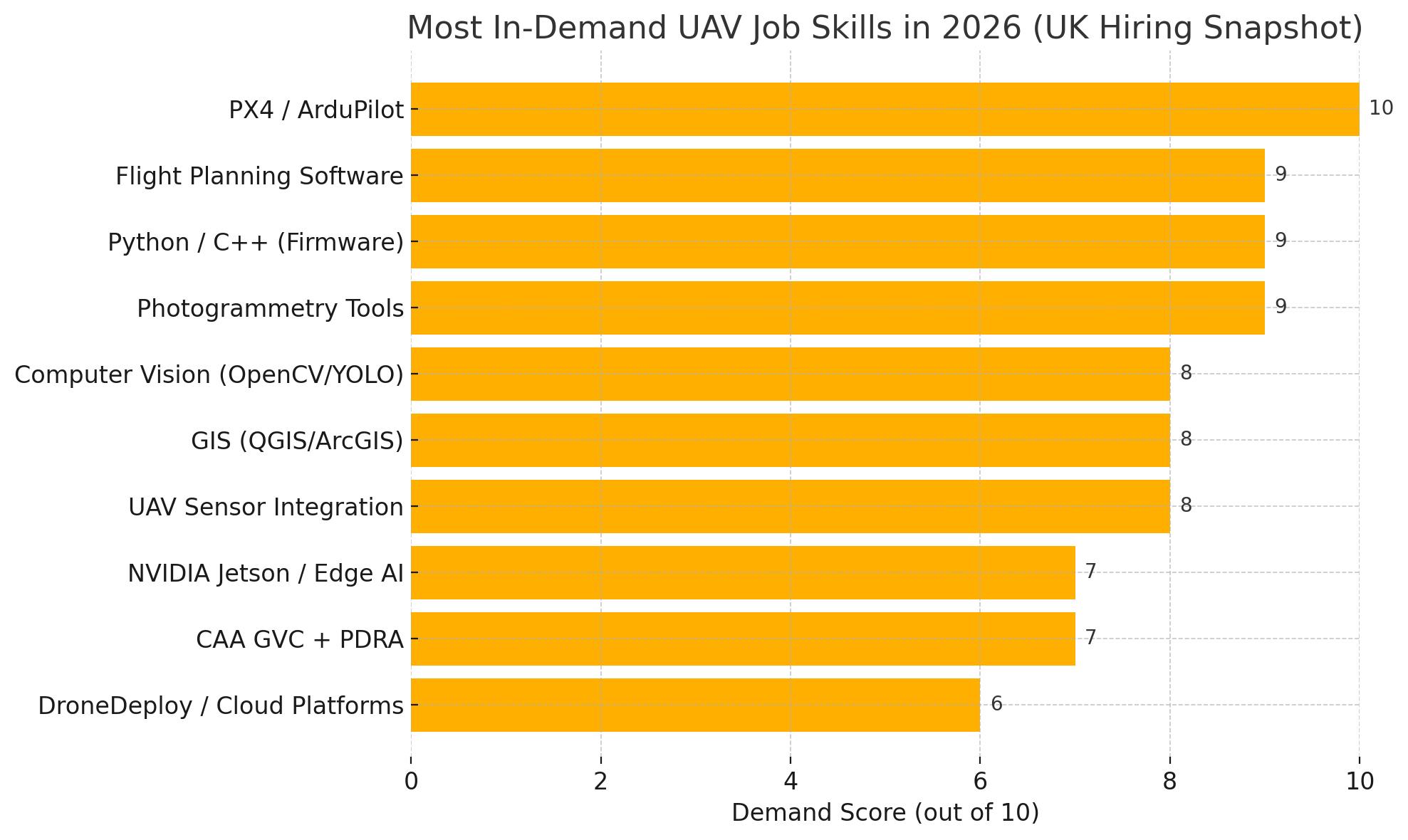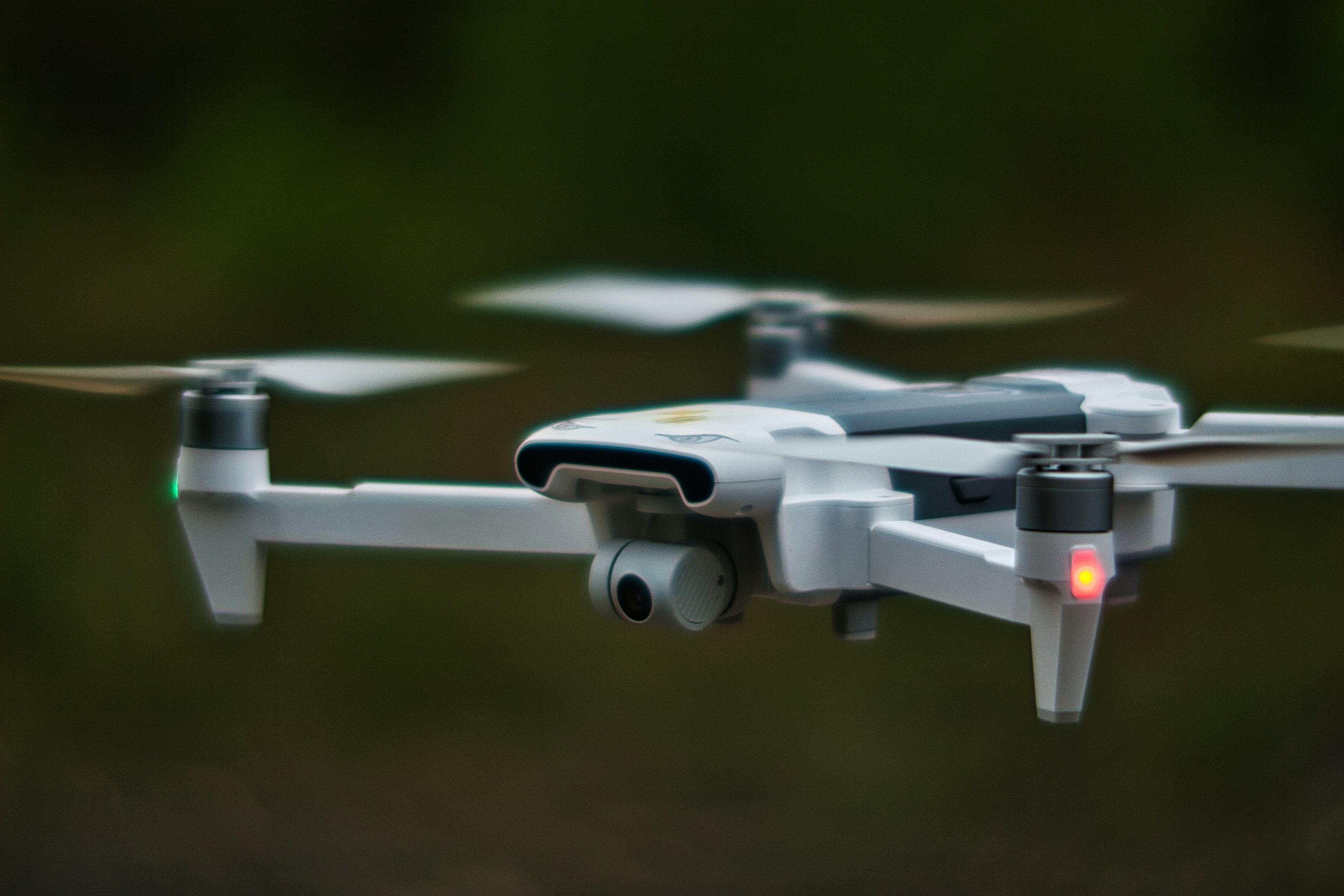
UAV Jobs Skills Radar 2026: Emerging Tools, Platforms & Technologies to Learn Now
Unmanned Aerial Vehicles (UAVs) are no longer just military assets—they're transforming agriculture, infrastructure inspection, logistics, filmmaking, and public safety. As commercial drone operations scale in the UK, the demand for skilled UAV professionals is rising sharply across engineering, flight operations, data analysis, and autonomous systems.
Welcome to the UAV Jobs Skills Radar 2026—your annual guide to the tools, platforms, certifications, and technologies that are shaping UAV careers in the UK. Whether you're a drone pilot, systems engineer, or AI developer working on autonomous navigation, this radar shows you what to focus on to remain in-demand.
Why UAV Skills Are in High Demand in 2026
The UK Civil Aviation Authority (CAA) has expanded operational approvals and infrastructure to support:
Beyond Visual Line of Sight (BVLOS) flight corridors
Urban drone logistics, public safety and emergency response
Real-time data capture in energy, rail and agriculture
AI-driven autonomous navigation and swarm control
Employers need candidates who understand flight systems, autonomy, airspace regulation and real-time data integration.
Top Programming Languages & UAV Frameworks
1. C/C++
What it is: Embedded systems programming for real-time flight control.
Why it matters: Enables precise control over UAV behaviour and sensor integration.
Used by: Drone manufacturers, defence integrators, autopilot developers.
Roles: Embedded Firmware Engineer, UAV Controls Developer.
Skills to pair: Real-time scheduling, I2C/SPI/UART, RTOS, PWM motor control.
2. Python
Where it fits: High-level scripting for automation, telemetry, vision processing and prototyping.
Used by: Research labs, AI-on-UAV teams, UAV dashboard apps.
Roles: Computer Vision Engineer, Simulation Developer.
Skills to pair: OpenCV, MAVProxy, DroneKit, PyTorch.
3. Rust
Why it’s rising: Memory-safe and performant for embedded UAV applications.
Used by: Emerging aerospace startups, safety-critical flight stacks.
Roles: Embedded Systems Engineer, Real-Time Robotics Developer.
Core UAV Software & Platforms
1. PX4 / ArduPilot
What it is: Open-source autopilot stacks for multicopters, fixed-wing and VTOL UAVs.
Why it matters: The foundation of most non-proprietary UAV systems.
Used by: R&D labs, military prototypes, commercial inspection drones.
Skills to pair: MAVLink, QGroundControl, parameter tuning, flight modes.
2. MAVLink Protocol
What it is: Lightweight messaging system for communication between drone and ground station.
Why it matters: Enables real-time control, telemetry and mission updates.
Used by: Companion computers, GCS apps, swarm control systems.
Skills to pair: Heartbeat management, message decoding, serial/broadcast interfaces.
3. QGroundControl / Mission Planner
What it is: Ground Control Station (GCS) software.
Why it matters: Provides planning, monitoring, telemetry and tuning interfaces.
Used by: Surveyors, operators, developers.
Skills to pair: Custom mission scripting, payload management.
4. UAVCAN / DroneCAN
What it is: Communication protocol for UAV subsystems.
Why it matters: Ensures real-time, fault-tolerant sensor and actuator control.
Roles: Hardware Integration Engineer, Bus Protocol Developer.
Computer Vision & AI at the Edge
▸ OpenCV + YOLO
Use case: Obstacle detection, landing pad identification, image recognition.
Used by: Drone delivery firms, autonomous UAVs, inspection platforms.
Skills to pair: GPU acceleration, bounding box filtering, video feeds.
▸ Jetson Nano / Xavier + TensorRT
What it is: NVIDIA’s edge AI platform for low-latency ML inference.
Why it matters: Supports onboard object tracking, gesture control and SLAM.
Roles: Edge AI Engineer, UAV Perception Developer.
▸ SLAM & Navigation Algorithms
Tools: ORB-SLAM, GMapping, Cartographer.
Why it matters: Enables position estimation without GPS.
Used by: Indoor drones, defence and warehouse robotics.
Geospatial & Data Processing Tools
▸ Photogrammetry
Tools: Agisoft Metashape, Pix4D, DroneDeploy.
Use case: 3D reconstruction, topography, infrastructure modelling.
▸ GIS & Mapping
Tools: ArcGIS, QGIS, Google Earth Engine.
Roles: UAV Data Analyst, Environmental Surveyor.
Skills to pair: Geotagging, shapefiles, KML/GeoJSON export.
▸ Cloud UAV Management
Platforms: FlytBase, DroneDeploy Cloud, AirMap.
Use case: Fleet control, remote mission planning, data syncing.
Compliance, Certification & Safety Protocols
1. CAA GVC (General Visual Line of Sight Certificate)
Why it matters: Required for UK commercial drone operations.
Issued by: CAA-approved training centres.
2. PDRA / BVLOS Authorisation
Use case: Enables long-range flights beyond line of sight.
Roles: UAV Flight Manager, Ops Coordinator.
3. EASA & ICAO Standards
Why it matters: For cross-border compliance and alignment with global airspace protocols.
4. Risk Assessment & SOPs
Skills: Airspace categorisation, emergency procedures, NOTAM management.
Most In-Demand UAV Job Skills in 2026 (UK Hiring Snapshot Forecast)
Here is a visual summary of the tools, frameworks & competencies that UK UAV employers are prioritising:

How to Future-Proof Your UAV Career in 2026
Learn PX4 or ArduPilot ThoroughlyThese are the open-source cores behind many UAVs used in inspection, research & defence.
Pair Technical Flight Skills with Data AnalysisMapping, surveying, and analytics are now as important as piloting.
Get CAA Certified + Expand to BVLOSThe GVC, plus PDRA & BVLOS permissions, open doors to higher-value contracts.
Integrate AI & AutonomyLearn how perception, path planning, and SLAM enable autonomous drone systems.
Build a Public PortfolioShowcase flight logs, mapping outputs, sensor integrations or open-source firmware contributions.
Where to Find UAV Jobs in the UK
🛩 Visit www.uavjobs.co.uk for UK-based listings in drone operations, aerial inspection, embedded UAV engineering, GIS analysis, autonomous flight, and UAV regulation/compliance.
Conclusion: Your UAV Skills Toolkit for 2026
The UAV sector is evolving fast. In 2026, employers want professionals who can do more than fly—they want integrators, engineers, analysts, and innovators who understand sensors, software, safety, and scalability.
Use this UAV Jobs Skills Radar 2026 to plan your training and professional development. We update it annually to reflect the real-world needs of UK drone employers.
Subscribe to the UAV Jobs UK newsletter for drone job alerts, pilot updates, and tech skills guidance.


